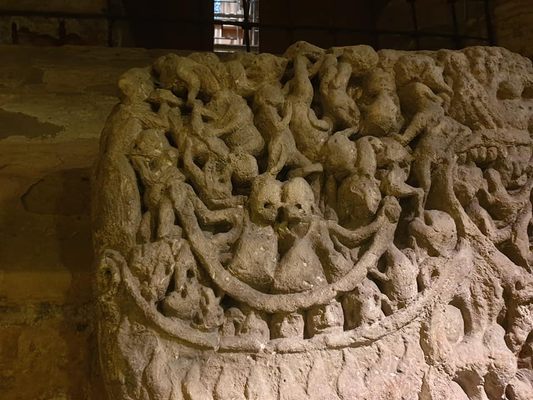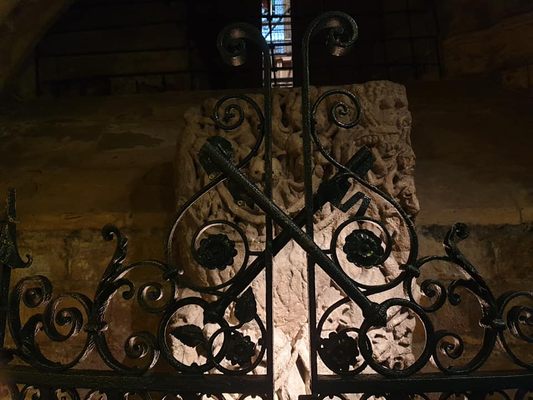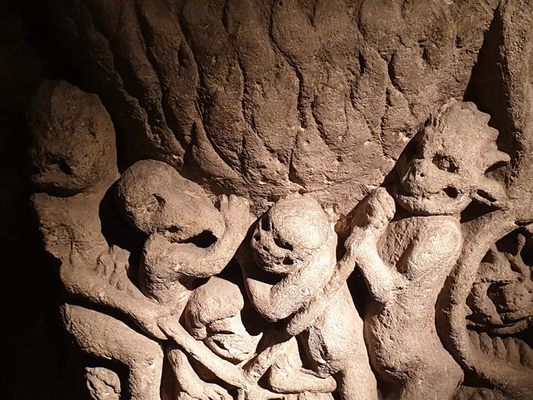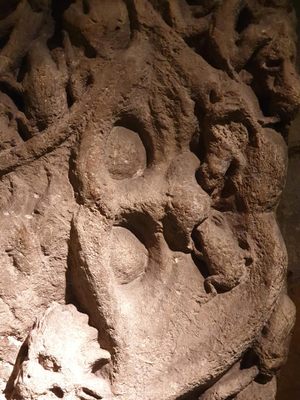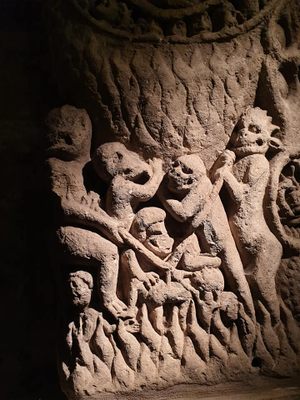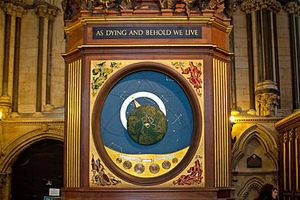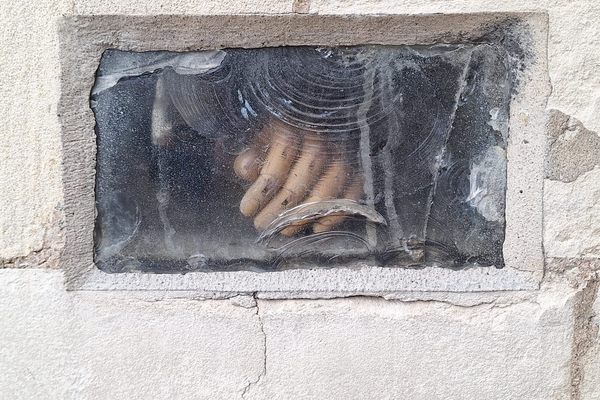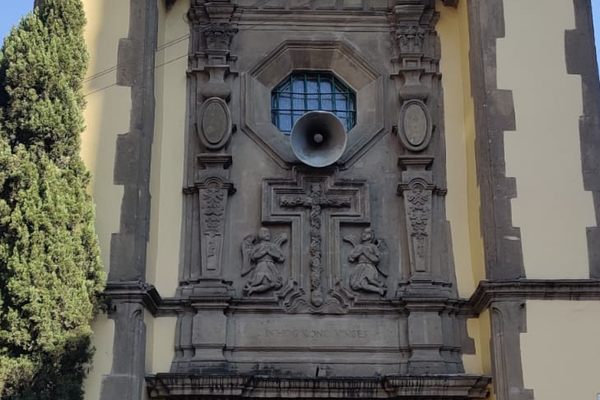About
York's Minster (or Cathedral) is not only one of the largest religious buildings in Northern Europe, but also home to many notable architectural features such as impressive stained glass windows and the "Heart of Yorkshire." Legend states that couples that kiss under the window, will remain devoted to each other forever. Walking in through the front and turning around, visitors will find the first of some less-famous wonders of the Minster: the Semaphore Saints.
These papier-mache sculptures were first placed in their niches in 2004. The Saints are headless human figures that spell out the message "Christ is here" in semaphore. They are the work of artist Terry Hammill, who designed them to be headless as a way to connect them with the history of Protestantism as a reaction to the perceived idolatry of Catholicism. They were also crafted as a symbolic interpretation of the importance of knowing "keys," such as a semaphore to decipher messages and understand languages.
Moving along the central nave of the cathedral and looking up, a wooden dragon's head breaks the symmetry. Not much information is available about it but it does pre-date the July 1984 fire. A hole on the dragon's head has been theorized to have contained a chain attached to it to lower and raise an object on the ground.
One of the oldest wonders of the Minster is the Doomstone. This carved monolith depicts vices and divine punishment alike. Dated to the 12th-century, it was likely part of the Norman Minster that pre-dated the current building. On it, carved imagery includes a woman representing lust, men with bags of coins that represent avarice, and a cohort of demons that torture them all in Hell. There are also images of toads depicted, they represent unclean symbols meant to cleanse the sins and transgression of the departed souls.
Not all hidden wonders of the Minster are intrinsically religious, as proven by the "Veteran Miner" sculpture. This small diorama by George Hector won the local Miners Arts and Crafts Prize in 1959 with its depiction of a miner working on the Barnsley Main Seam, found in Yorkshire. As the winner, Hector got to decide where his work would be placed for posterity. His choice to have it placed in the Minster represents the two-way relationship commonly present between the working classes and religion.
Related Tags
Know Before You Go
All of these wonders are in the interior of the Minster and require paid entry. Adult entrance to York Minster is £12. Opening times are 9 am to 5 or 6 pm depending on the season.
Community Contributors
Added By
Published
June 30, 2021
Sources
- https://mondes-normands.caen.fr/angleterre/archeo/angleterre/sculpture/doomstone.htm
- https://www.britainallover.com/2019/03/doom-stone-at-york-minster/
- http://wasleys.org.uk/eleanor/churches/england/yorkshire/north_yorkshire/york/york_1/minster/minster_two/index.html
- https://www.greatbritishlife.co.uk/homes-and-gardens/places-to-live/5-weird-and-wonderful-things-to-see-in-york-minster-6384274
- https://www.york.ac.uk/ipup/research/archive/york/minster-objects/miner/
- https://www.yumpu.com/en/document/read/5836511/semaphore-saints-york-minster









